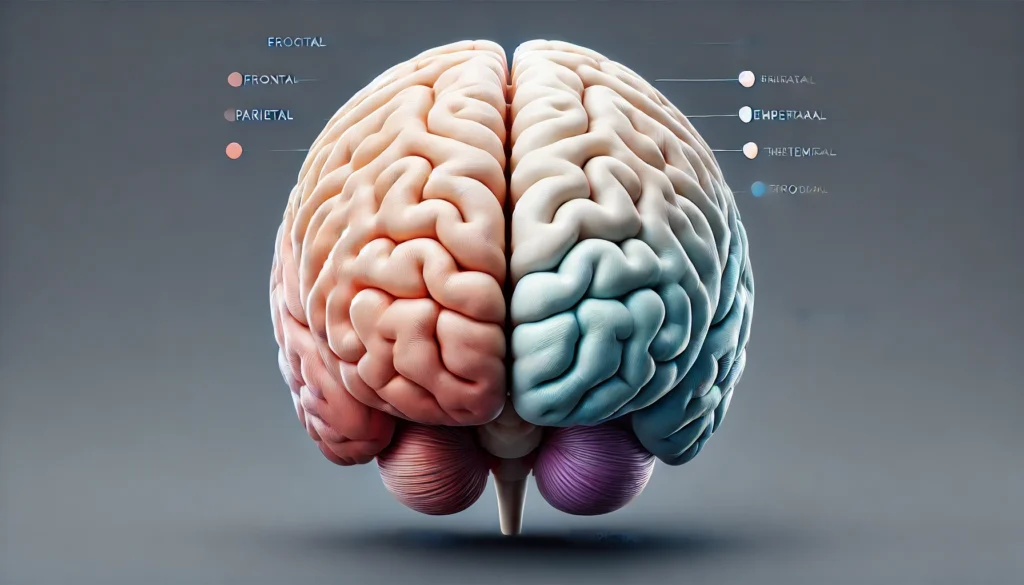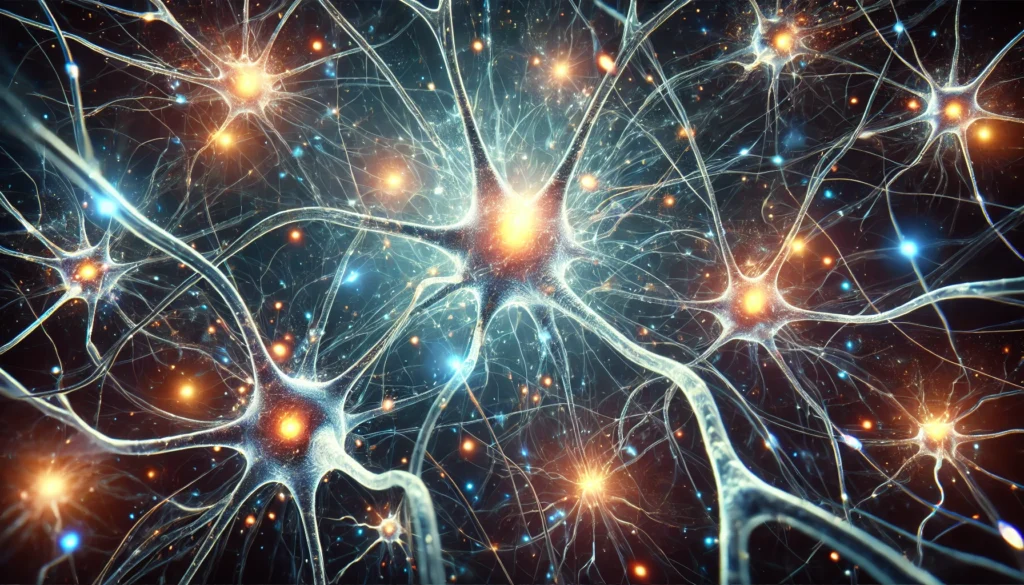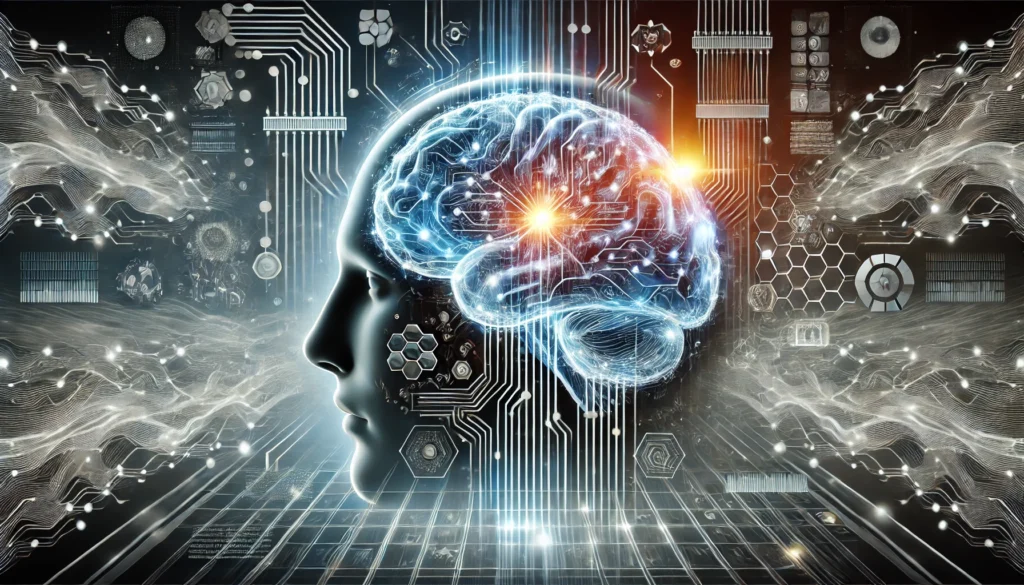The human brain is a marvel of biological engineering, often described as the most complex structure in the known universe. Its intricacies are the foundation of our thoughts, emotions, and actions. Understanding the brain’s role in psychology is key for anyone interested in the intricate dance between mind and matter. In this article, we’ll journey through where most information processing occurs in the brain, delve into brain studies, and explore the significant interplay between the human brain and psychology.
You may also like: Boost Your Mind: Top Brain Games
The Brain: An Overview
The brain is a mass of soft tissue that commands the body’s nervous system. It’s composed of billions of neurons that communicate through synapses, forming networks that control everything from heartbeat regulation to abstract thought. In the context of psychology, the brain’s ability to process information and generate responses is pivotal.
Neurons and Synapses
Neurons are the building blocks of the brain, specialized cells that transmit information through electrical and chemical signals. Each neuron can form thousands of synaptic connections with other neurons, creating complex neural networks. These connections are dynamic and can strengthen or weaken over time, influencing learning and memory.
Synapses are the junctions between neurons where communication occurs. The release of neurotransmitters across synapses allows neurons to pass signals to one another, orchestrating everything from basic reflexes to higher cognitive functions. This synaptic activity is crucial for the brain’s adaptive capabilities.
The Brain’s Structure and Function
The brain is divided into several regions, each with specific functions. The cerebellum, for instance, is critical for motor control and coordination, while the brainstem regulates vital functions like breathing and heart rate. Understanding these regions helps us grasp how different parts of the brain contribute to our overall behavior and mental processes.
White matter and gray matter are key components of the brain’s structure. Gray matter contains most of the brain’s neuronal cell bodies and is involved in processing information, while white matter consists of myelinated axons that connect different brain regions, facilitating communication and coordination.
The Role of Glial Cells
While neurons are the main communicators, glial cells play supportive roles that are equally important. These cells help maintain homeostasis, form myelin, and provide support and protection for neurons. They also assist in cleaning up debris and regulating the extracellular environment, ensuring optimal conditions for neural activity.
Recent research has highlighted the active role of glial cells in modulating synaptic activity and influencing cognitive functions. Understanding their contributions is essential for a comprehensive view of brain function.
Where Does Most Information Processing Occur?
When it comes to information processing, the cerebral cortex is where the magic happens. This outermost layer of the brain is divided into four lobes: frontal, parietal, temporal, and occipital, each responsible for different functions.
Frontal Lobe
The frontal lobe is the brain’s command center, involved in decision-making, problem-solving, and planning. It’s also crucial for voluntary movement and expressive language. This area is highly developed in humans and plays a significant role in higher cognitive functions such as reasoning, judgment, and impulse control.
The prefrontal cortex, part of the frontal lobe, is associated with executive functions. It helps in setting goals, prioritizing tasks, and controlling attention. Understanding its role can provide insights into various psychological conditions, including ADHD and decision-making processes.

Parietal Lobe
The parietal lobe is essential for integrating sensory information, helping us understand spatial orientation and navigation. It processes information from different senses, allowing us to perceive the world coherently. This integration is crucial for tasks that require attention to detail and spatial awareness.
This lobe also plays a role in the perception of touch and pain. It helps us discriminate between different textures, temperatures, and pressures, contributing to our overall sensory experience.
Temporal Lobe
The temporal lobe is key for processing auditory information and is vital for memory and emotion. It’s involved in the comprehension of language and the formation of long-term memories. This lobe houses the hippocampus, a critical structure for learning and memory consolidation.
Emotionally, the temporal lobe interacts with the limbic system, influencing how we perceive and react to emotional stimuli. Understanding its functions can shed light on conditions like epilepsy and certain language disorders.
Occipital Lobe
The occipital lobe is primarily responsible for visual processing. It interprets information received from the eyes, enabling us to understand shapes, colors, and movements. This lobe’s efficient functioning is crucial for tasks that require visual attention and recognition.
Damage to the occipital lobe can lead to visual impairments and disorders such as blindsight, where individuals can respond to visual stimuli without conscious awareness. Studying this lobe helps us understand the complexities of visual perception.
Interplay Among the Lobes
The interplay among these lobes enables the brain to perform complex tasks that underlie human cognition and behavior. This integration allows us to perceive, interpret, and respond to our environment in a coordinated manner. Understanding this interplay is crucial for comprehending how the brain orchestrates our thoughts and actions.
The Brain in Psychology
Historical Context
The study of the brain dates back to ancient Egypt, but significant progress occurred during the Renaissance, laying the groundwork for modern psychology. Early anatomists like Andreas Vesalius challenged misconceptions and provided detailed illustrations of the brain, advancing our understanding of its structure and function.
The 19th century saw the emergence of phrenology, a pseudoscience that linked brain regions to personality traits. While debunked, phrenology sparked interest in the localization of brain functions, leading to more rigorous scientific exploration.
The 20th century witnessed the development of neuropsychology, combining neuroscience and psychology to study brain-behavior relationships. Pioneers like Paul Broca and Carl Wernicke identified specific brain areas responsible for language, furthering our understanding of functional localization.
Current Trends in Brain Study
Today, brain studies are more advanced than ever, driven by technologies such as functional magnetic resonance imaging (fMRI) and positron emission tomography (PET). These tools allow scientists to observe brain activity in real-time, providing insights into how different areas of the brain contribute to various psychological processes.
Neuroplasticity
Neuroplasticity is one of the most exciting areas of brain study, highlighting the brain’s ability to adapt and reorganize itself. It has significant implications for learning, memory, and recovery from brain injuries. Neuroplasticity emphasizes that our brains are not static but dynamic, capable of change throughout our lives.
Research into neuroplasticity has led to innovative rehabilitation therapies for stroke patients, demonstrating the brain’s remarkable capacity for healing. It also underscores the importance of lifelong learning and mental stimulation in maintaining cognitive health.
Cognitive Neuroscience
Cognitive neuroscience explores the neural connections underlying mental processes, bridging the gap between psychology and neuroscience. This field seeks to understand how brain activity translates into thoughts, emotions, and behaviors, offering valuable insights into the nature of consciousness.
By combining techniques like brain imaging and behavioral experiments, cognitive neuroscience has advanced our understanding of disorders such as schizophrenia and autism. It also informs the development of interventions targeting cognitive deficits.
The Role of Neurotransmitters
Understanding neurotransmitters like serotonin and dopamine is crucial for comprehending mood regulation and disorders such as depression and anxiety. These chemical messengers play vital roles in transmitting signals between neurons, influencing our emotions and behavior.
Research into neurotransmitters has led to the development of psychotropic medications, offering relief for individuals with mood disorders. It also highlights the importance of lifestyle factors, such as diet and exercise, in maintaining neurotransmitter balance.
The Human Brain and Psychology: A Symbiotic Relationship
The intricate relationship between the human brain and psychology cannot be overstated. This symbiosis is evident in several psychological phenomena.
Emotion and the Limbic System
The limbic system, often termed the emotional brain, includes structures like the amygdala and hippocampus. It plays a pivotal role in emotional regulation and memory formation. The amygdala, for instance, is essential for processing emotions such as fear and pleasure.
The hippocampus is integral to contextualizing emotions, linking them to specific memories. This connection is crucial for understanding how past experiences influence our emotional responses and decision-making.
The limbic system’s interactions with the prefrontal cortex help regulate emotions and control impulses. This balance is vital for maintaining mental health and emotional well-being.
Learning and Memory
The hippocampus is central to forming new memories and learning. Understanding how memories are stored and retrieved is vital for cognitive psychology and has applications in educational psychology.
Memory consolidation occurs during sleep, highlighting the importance of adequate rest for learning and retention. Strategies like spaced repetition and mnemonic devices can enhance memory performance.
Memory impairments, such as those seen in Alzheimer’s disease, underscore the need for continued research into memory mechanisms. Advances in this area hold promise for developing interventions that preserve cognitive function.
Consciousness and the Prefrontal Cortex
Conscious thought and self-awareness are linked to the prefrontal cortex. This area is associated with complex behaviors, including personality expression and moderating social behavior.
Self-reflection and introspection are functions of the prefrontal cortex, allowing us to evaluate our thoughts and actions. This capability is essential for personal growth and self-improvement.
Disruptions in prefrontal cortex activity can lead to changes in personality and social behavior, as seen in conditions like frontal lobe syndrome. Studying these effects can improve our understanding of consciousness and self-awareness.

Future Implications
The future of brain study holds immense potential. Brain-computer interfaces (BCIs) are emerging technologies that allow direct communication between the brain and external devices. This technology could revolutionize how we interact with computers and machines, offering profound implications for psychology and beyond.
BCIs have the potential to restore communication and mobility to individuals with disabilities, transforming their quality of life. As this technology advances, ethical considerations regarding privacy and cognitive enhancement will become increasingly important.
Moreover, the study of brain function and psychology can inform the development of artificial intelligence, enhancing machine learning models to mimic human thought processes more closely. This convergence of AI and neuroscience promises to unlock new frontiers in understanding and replicating human cognition.
Practical Advice for Health and Wellness Coaches
For health and wellness coaches, understanding the brain’s role in psychology provides a foundation for offering more effective advice and support to clients. Incorporating mindfulness practices that promote neuroplasticity, like meditation and cognitive-behavioral techniques, can be powerful tools for enhancing mental health and well-being.
Encouraging clients to engage in physical activities that boost brain health, such as aerobic exercise and yoga, can also support cognitive function. These activities increase blood flow to the brain and stimulate the release of beneficial neurotransmitters.
Educating clients on the importance of nutrition and sleep in brain health can empower them to make informed lifestyle choices. A diet rich in omega-3 fatty acids and antioxidants, along with sufficient sleep, supports optimal brain function and resilience.

Conclusion
The brain is both a biological organ and the seat of the mind, making it a central focus of psychology. Through historical exploration, current trends, and future implications, we gain a deeper understanding of how the brain shapes our psychological experiences. By continuing to study this fascinating organ, we can unlock the secrets of human behavior and mental processes, paving the way for advances in mental health and cognitive sciences. Whether you’re a health coach, science journalist, or biohacker, understanding the brain’s pivotal role in psychology is essential for navigating the complexities of the human experience.
Further Reading:
Cognitive Psychology: How the Brain Works
Major Structures and Functions of the Brain
Brain Anatomy and How the Brain Works
Important Note: The information contained in this article is for general informational purposes only, and should not be construed as health or medical advice, nor is it intended to diagnose, prevent, treat, or cure any disease or health condition. Before embarking on any diet, fitness regimen, or program of nutritional supplementation, it is advisable to consult your healthcare professional in order to determine its safety and probable efficacy in terms of your individual state of health.
Regarding Nutritional Supplements Or Other Non-Prescription Health Products: If any nutritional supplements or other non-prescription health products are mentioned in the foregoing article, any claims or statements made about them have not been evaluated by the U.S. Food and Drug Administration, and such nutritional supplements or other health products are not intended to diagnose, treat, cure, or prevent any disease.


